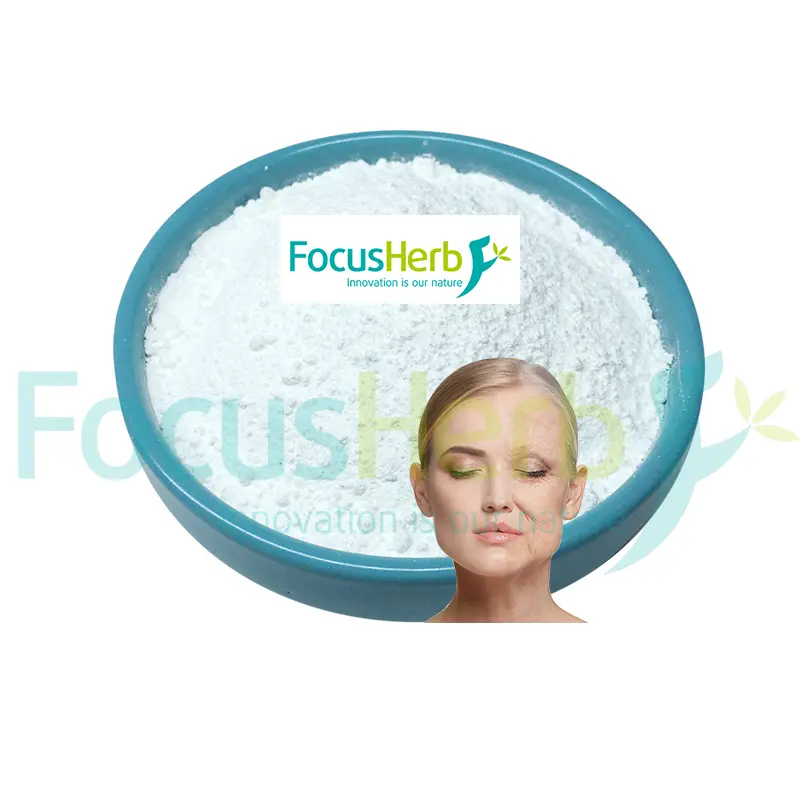In the course of life, aging, like an inevitable twilight, quietly descends. But what exactly is aging? Delving into the cellular and molecular levels, we discover that the essence of aging is a domino effect triggered by a decline in NAD+ levels. NAD+, or nicotinamide adenine dinucleotide, may sound unfamiliar, but it plays a crucial role in our bodies. It is a core coenzyme for cellular energy metabolism, DNA repair, and the activation of longevity proteins. Simply put, NAD+ is like the energy currency of cells; without it, various cellular physiological activities cannot function properly. Imagine a cell as a busy factory, and NAD+ as the electricity that keeps the factory running. Once the electricity is insufficient, the factory’s production efficiency drops drastically, even leading to paralysis. As we age, the NAD+ levels in our bodies decline precipitously, like a leaky battery. Studies show that starting around age 30, the body’s NAD+ content decreases by about 50% every 20 years. By age 60, NAD+ levels may only be 25% of what they were in youth. This sharp decline triggers a series of chain reactions. Mitochondria, the cell’s “powerhouse,” are responsible for producing the energy needed for cellular activities. When NAD+ levels drop, mitochondrial function is severely affected. The mitochondrial respiratory chain becomes less efficient, unable to produce enough energy, leading to cellular energy metabolism disorders. We will clearly feel fatigue and decreased physical strength; daily activities that were once easy become difficult, climbing a few flights of stairs leaves us breathless, and even slight exercise causes exhaustion. DNA damage also accumulates during this process. NAD+ is an essential substrate for the DNA repair enzyme PARP (poly-ADP-ribose polymerase). When NAD+ is insufficient, PARP activity is limited, unable to repair damaged DNA effectively and promptly. Radiation, pollution, and free radicals generated by daily metabolism can all damage DNA. If this damage is not repaired in time, it can lead to gene mutations, increasing the risk of age-related diseases such as cancer and Alzheimer’s. Apoptosis is also accelerated. Under normal circumstances, apoptosis is an orderly process of cell death that helps maintain normal physiological functions. However, when NAD+ levels drop, the regulatory mechanisms for apoptosis become unbalanced, leading to premature cell death and a subsequent decline in tissue and organ function. This can cause the skin to lose elasticity, becoming wrinkled and sagging. A weakened immune system can also make us more susceptible to pathogens, leading to frequent illnesses and slow recovery.
 NR core mechanism of action: Targeting three major aging pathways
NR core mechanism of action: Targeting three major aging pathways
Activating the longevity proteins Sirtuins
The sirtuins family, known to scientists as “longevity proteins,” has a closely linked activity to NAD+ levels. NR, a key precursor of NAD+, elevates NAD+ levels within cells, thereby activating sirtuins.
Once activated, sirtuins act like diligent guardians of genes, performing their miraculous functions. They repair damaged DNA and ensure the accurate transmission of genetic information. Furthermore, sirtuins can slow the shortening of telomeres. Telomeres, like the caps at the ends of chromosomes, shorten with cell division. When telomeres shorten to a certain point, cells cease dividing and enter a state of senescence. By slowing telomere shortening, sirtuins safeguard cellular youthfulness at the genetic level. A research team at Harvard Medical School conducted an experiment in which they supplemented elderly mice with NR. Over time, they found that sirtuin activity in the mice increased significantly, DNA damage was effectively repaired, telomere length increased, and multiple physiological indicators showed significant improvement, as if the mice had regained youthful vitality.
Rebuilding Mitochondrial Function
The health of mitochondria is directly related to the cell’s energy supply and overall function. NR plays a crucial role in restoring mitochondrial function.
NR can enhance the efficiency of the mitochondrial respiratory chain, restoring the efficiency of these “powerhouses.” It promotes the proper functioning of the electron transport chain within mitochondria, enabling more efficient conversion of oxygen and nutrients into ATP. NR also reduces the production of free radicals. Free radicals are harmful substances produced during cellular metabolism. They are highly oxidative and can attack mitochondria and other cellular structures, leading to cell damage and aging. NR increases NAD+ levels and activates the antioxidant enzyme system within mitochondria, neutralizing free radicals and reducing their damage to mitochondria. In a study of elderly individuals, supplementing with NR significantly improved their mitochondrial function, boosted their energy metabolism, and significantly boosted their endurance and vitality, reducing fatigue.
Regulating Oxidative Stress and Inflammation
Oxidative stress and inflammation are two major culprits in the aging process, interacting to accelerate the aging process. NR, like a valiant warrior, effectively regulates both oxidative stress and inflammation.
NR’s metabolites in the body form high-electron-dense structures with potent antioxidant properties, neutralizing free radicals and reducing cellular damage caused by oxidative stress. They protect biomacromolecules such as cell membranes, proteins, and DNA from free radical attack. NR also inhibits the production and release of inflammatory factors. Inflammatory factors such as TNF-α and IL-6 can trigger chronic inflammation and disrupt the normal function of tissues and organs. NR activates proteins such as SIRT1 and inhibits the NF-κB pathway, thereby reducing the expression of inflammatory factors and alleviating inflammatory responses. Studies on people with chronic inflammatory diseases have found that supplementing with NR significantly reduced levels of inflammatory markers, improved aging-related damage to organs like blood vessels and the liver, and enhanced overall health.
The Evidence of NR’s Anti-Aging Effects: A Key Breakthrough from the Bench to the Clinic
(I) Animal Experiments: Evidence of Lifespan Extension from Yeast to Mammals
Yeast Model: In 2000, an exploration in the microscopic world launched the anti-aging research of NR. Scientists focused on yeast, a simple yet remarkable single-celled organism whose life processes hold the secrets of aging. In their experiments, researchers discovered that when NAD+ synthase (glutamine hydrolase) was deleted from yeast cells, cell growth was severely inhibited, as if they had lost their driving force. However, surprisingly, the addition of NR revitalized these previously stagnant yeast cells, restoring their ability to grow. This discovery, like a ray of light, illuminated the path to NR’s intervention in lifespan regulation and revealed its enormous potential to maintain cellular life and delay aging.
Mouse Experiments: If yeast experiments were the beginning of NR’s anti-aging research, then mouse experiments allowed this seed to grow into a robust sapling. In 2012, a research team at the Swiss Federal Institute of Technology in Lausanne (EPFL) turned their attention to obese mice. These mice, due to dietary factors and other factors, had metabolic disorders, like a malfunctioning machine. The researchers supplemented them with NR, and after a period of time, something miraculous happened. The mice’s metabolic indicators improved significantly. Previously high blood sugar and blood lipid levels began to decline, and insulin sensitivity increased, as if the parts of a machine had been recalibrated and were running more smoothly. In 2014, a US research team also joined the exploration. They found that supplementing mice with liver cancer with NR inhibited tumor growth and extended the mice’s healthy lifespan. The mice’s vitality increased significantly, no longer showing the lethargy they had experienced during illness, further demonstrating the significant efficacy of NR in fighting disease and delaying aging.
(II) Human Clinical Trials: Breakthroughs Targeting Premature Aging and Aging-Related Diseases
Werner Syndrome Intervention: In 2023, a research team at Chiba University in Japan brought exciting news. They launched a clinical trial for patients with Werner syndrome. Werner syndrome is a rare premature aging disorder. Patients in their twenties develop age-related features such as gray hair, baldness, and cataracts. Life seems to be fast-forwarded, and various age-related diseases strike early, severely impacting their quality of life and lifespan.
In this trial, patients took NR daily. The results were astonishing: NAD+ levels in their blood increased by 40%, like a fresh stream of water injected into a dry river. Arterial stiffness was significantly reduced, making previously stiff blood vessels more elastic and reducing the risk of cardiovascular disease. Skin ulcers healed faster, and long-standing, difficult-to-heal wounds began to heal. Kidney function also improved, and the body’s detoxification and other functions were restored. This is the first demonstration of NR’s therapeutic potential for human progeria, offering new hope for these patients.
Impacts on Healthy Aging: Research teams have also conducted controlled trials on people aged 40-65. People in this age group begin to show various signs of aging, including decreased energy, poorer sleep quality, and decreased cognitive function. Researchers had participants supplement with 300mg of NR daily for 60 days. After 60 days, a miracle occurred. The participants’ serum NAD+/NADH ratio increased by 38%, and their bodies’ energy metabolism became more efficient. Muscle strength increased, and lifting heavy objects that once seemed impossible now seemed effortless. Sleep quality improved significantly, allowing for more restful nights and more alert days. Cognitive function also improved, with enhanced memory and sharper thinking, as if they had regained their youthful state.
Technological Breakthrough: From “Inefficient Supplementation” to “Precise Anti-Aging”: Industrial Innovation
(I) Bottlenecks in Traditional NR Applications: Gastrointestinal Metabolism and Cell Penetration
Although NR is widely present in nature, its content is extremely low, like a treasure hidden in the vast ocean. For example, to obtain the required dose of NR in milk, a whopping 100,000 cups of milk would be required—a far-fetched prospect. Furthermore, attempts to supplement NAD+ through oral NR intake face numerous obstacles.
After oral administration, NR encounters a formidable “enemy” at its first stop in the human body: the gastrointestinal tract. Gastric enzymes, like ferocious “hunters,” attack NR, destroying its structure. When NR manages to escape the gastric enzymes and enter the liver, it is metabolized into nicotinamide. Although nicotinamide is also involved in the NAD+ synthesis pathway, its activity and efficacy are significantly inferior to those of NR. This prevents NR from entering cells in its intact and effective form, hindering its ability to exert its intended anti-aging effects.
Early NR supplements mostly used a single formula. This simple design resulted in an extremely low NR conversion rate in the body, less than 15%. Such a low conversion rate is like sprinkling a few insignificant drops of water on the raging flame of aging, resulting in minimal anti-aging effects and failing to meet people’s urgent need to delay aging.
(II) Revolutionary Technology Empowerment: A Dual Breakthrough from Protecting Groups to Active Sulfur
When NR applications were facing difficulties, the team led by Wen-jun Wen, a member of the American Institute of Medical and Biological Engineering, stepped forward and introduced the revolutionary TOPIA® technology, paving a new path for the efficient utilization of NR.
Protecting group modification: This innovation is like giving NR a sturdy “armor.” By cleverly forming a protective layer on the surface of the NR molecule, it resists degradation by various enzymes in the gastrointestinal tract. It’s like a warrior donning an indestructible shield, fearless of enemy attacks. NR can enter the bloodstream in its intact form, significantly improving its stability and bioavailability within the body. This modification boosts NR’s conversion rate to over 70%, effectively injecting a powerful boost into NR’s anti-aging journey.
Active sulfur synergy: This is another key highlight of TOPIA® technology. Active sulfur acts like a magic key, activating cell membrane channels and causing them to temporarily dilate. This allows NR to efficiently enter cells, just like a fish swimming through water. Furthermore, active sulfur allows NR to form a highly electrophilic structure, acting like a powerful “cleaner” with exceptional free radical scavenging capabilities. This not only effectively eliminates free radicals within cells, reducing oxidative stress damage, but also simultaneously improves mitochondrial and DNA repair efficiency. Mitochondrial function is further enhanced, enabling more efficient energy production; DNA repair mechanisms are also more active, promptly repairing damaged genes, providing comprehensive protection for cellular youthfulness at multiple levels.
(III) The Birth of the Benchmark Product NOVIS: A Milestone in Scientific Translation
Based on a major breakthrough in TOPIA® technology, NOVIS emerged as a shining star in the NR anti-aging field. It is the first complex NR supplement registered with the US FDA, a registration that signifies NOVIS’s authoritative recognition of safety and efficacy.
NOVIS’s exquisitely designed formula significantly increases NAD+ levels by 60% with just two capsules daily. By boosting NAD+ levels, NOVIS precisely regulates the activity of sirtuins. Once activated, sirtuins begin to exert their powerful effects, promoting muscle regeneration. Once weakened, muscles gradually regain elasticity and strength, allowing people to more easily perform exercises and daily activities. Vascular elasticity is also restored, making previously stiff vessels soft and flexible, reducing the risk of cardiovascular disease. Cognitive function is also improved, with enhanced memory and more agile thinking, as if the brain has been revitalized. NOVIS’s exceptional performance has earned it high acclaim from international media, being hailed as a “breakthrough product in the anti-aging field.” Its launch is not only a significant achievement in scientific research, but also brings tangible hope to those pursuing health and youth, taking a solid step forward on the path to anti-aging.
NR’s Multidimensional Empowerment of Physiological Indicators: Key Evidence for Delaying Aging
(I) Metabolic and Energy Systems: Rebooting the Cellular “Vitality Engine”
Blood Glucose and Lipids: NR acts like a “smart steward” of the body’s metabolism, playing a crucial role in the regulation of blood glucose and lipids. For blood glucose, NR can significantly improve insulin sensitivity. Insulin is like a “key” that unlocks the “door” of cells, allowing glucose from the blood to enter and provide energy. When insulin sensitivity is enhanced, cells respond more sensitively to insulin, and glucose can be more efficiently taken up and utilized by cells, thereby lowering blood glucose levels. A study on prediabetic individuals showed that after NR supplementation, subjects experienced a significant reduction in insulin resistance, and fasting blood glucose and postprandial blood glucose were effectively controlled, like “applying the brakes” to runaway blood glucose.
NR also performs exceptionally well in lipid regulation. It can lower triglyceride levels, an important component of blood lipids, and excessively high triglycerides increase the risk of cardiovascular disease. NR reduces triglyceride synthesis and promotes its breakdown and metabolism by regulating the expression of genes related to lipid metabolism, thus keeping blood lipids within a healthy range. Long-term NR supplementation can effectively slow the progression of metabolic syndrome, reduce the risk of metabolic diseases such as diabetes and cardiovascular disease, and build a strong defense for health.
Mitochondrial function: Mitochondria, the “energy factories” within cells, directly affect the body’s energy supply and vitality. NR has a remarkable effect on improving mitochondrial function. It can increase the efficiency of ATP production. ATP is the direct energy source of cells, like the cell’s “energy currency,” and sufficient ATP ensures the smooth operation of various physiological activities.
NR optimizes the electron transport process in the mitochondrial respiratory chain by activating key enzymes in mitochondria, enabling oxygen and nutrients to be converted into ATP more efficiently, providing cells with sufficient energy. NR can also reduce lactic acid buildup. During exercise or high-intensity activity, cells undergo anaerobic respiration, producing lactic acid. When excessive lactic acid accumulates, it can lead to discomfort such as muscle soreness and fatigue. NR enhances the aerobic metabolic capacity of mitochondria, reduces anaerobic respiration, and thus lowers lactic acid production. Simultaneously, NR promotes lactic acid clearance and metabolism, allowing the body to recover from fatigue more quickly. Many athletes who supplement with NR have experienced significantly improved endurance and fatigue resistance, enabling them to perform better in training and competition, as if they possess an inexhaustible energy source.
(II) Organ and System Rejuvenation: Reversing Aging from the Inside Out
Cardiovascular System: The cardiovascular system acts like the body’s “transportation network,” responsible for delivering blood to all parts of the body. NR plays a crucial role in protecting cardiovascular health and delaying cardiovascular aging.
Arterial stiffness is a significant marker of cardiovascular aging, leading to increased blood pressure, increased cardiac workload, and increased risk of cardiovascular disease. NR reduces arterial stiffness, restoring blood vessel elasticity. It promotes the release of nitric oxide (NO) by activating nitric oxide synthase (eNOS) in vascular endothelial cells. NO acts like a “lubricant” for blood vessels, relaxing vascular smooth muscle, dilating blood vessels, and reducing vascular resistance, thus making arteries more flexible and elastic.
Endothelial function is also crucial for maintaining cardiovascular health. Vascular endothelial cells not only act as a barrier between blood and tissues but also secrete various bioactive substances that regulate vasoconstriction and vasodilation, inhibit platelet aggregation, and prevent thrombus formation. Norepinephrine (NR) can improve endothelial function and protect vascular endothelial cells from oxidative stress and inflammation. It can enhance the antioxidant capacity of endothelial cells, reduce free radical attacks on endothelial cells, and simultaneously inhibit the release of inflammatory factors, mitigating the damage to endothelial cells caused by inflammatory responses. In one study, supplementing animals with NR significantly improved their vascular endothelial function, restored normal vasodilation and vasoconstriction, and effectively reduced the risk of cardiovascular disease.
The formation of atherosclerotic plaques is one of the main pathological bases of cardiovascular disease. NR can delay the formation of atherosclerotic plaques by inhibiting inflammatory responses and oxidative stress, reducing lipid deposition in the blood vessel wall, and preventing plaque formation and development. Simultaneously, NR can promote the normal proliferation and differentiation of vascular smooth muscle cells, maintain the structural and functional stability of the blood vessel wall, and protect cardiovascular health from multiple aspects, ensuring the smooth flow of the “traffic network.”
Nervous System: The nervous system is the body’s “command center,” responsible for controlling and regulating various physiological activities. With age, the nervous system gradually deteriorates, leading to cognitive decline, memory loss, and mood swings. Neurotrophic factor (NR) plays a unique role in protecting the nervous system and delaying neuronal aging.
Neurons are the basic building blocks of the nervous system; they are very fragile and easily affected by oxidative damage. NR protects neurons from oxidative damage by increasing intracellular NAD+ levels, activating antioxidant enzyme systems, neutralizing free radicals, and reducing the attack of oxidative stress on neurons. Simultaneously, NR promotes neuronal energy metabolism, enhancing neuronal vitality and resistance to damage. In animal models of neurodegenerative diseases such as Alzheimer’s and Parkinson’s,
NR supplementation significantly reduced neuronal damage and achieved a certain degree of neurological function recovery. Brain-derived neurotrophic factor (BDNF) is a protein crucial for the development and maintenance of nervous system function. It promotes neuronal growth, differentiation, and survival, strengthens connections between neurons, and improves learning and memory abilities. NR can increase BDNF levels by activating related signaling pathways, promoting BDNF synthesis and release. Clinical studies have shown that people who supplement with NR long-term have significantly higher BDNF levels in their brains, improved cognitive function, enhanced memory, more agile thinking, and more stable emotions, as if injecting new vitality into the “command center.”
Immune System: The immune system is the body’s “defense force,” responsible for resisting the invasion of pathogens and protecting the body from disease. With age, the immune system gradually declines, the function of immune cells decreases, resistance to pathogens weakens, and various infectious diseases become more likely.
NR plays an important role in regulating the immune system and delaying immune aging. CD38 enzyme is an enzyme that consumes NAD+. With age, the activity of CD38 enzyme increases, leading to a decrease in intracellular NAD+ levels, which in turn affects the function of immune cells. NR can regulate the activity of CD38 enzyme, reducing its consumption of NAD+ and maintaining stable intracellular NAD+ levels. In this way, immune cells can obtain sufficient energy and material supply, maintaining a good functional state.
T cells are important members of the immune system, playing a key role in recognizing and clearing pathogens and regulating immune responses. NR can enhance the function of T cells, promoting their proliferation and activation, and improving their ability to recognize and attack pathogens. At the same time, NR can also regulate the differentiation and functional balance of T cells, enhancing the overall function of the immune system. Studies have found that elderly people who supplement with NR have significantly enhanced T cell activity, improved resistance to pathogens such as influenza viruses, and reduced risk of infection, making their “defense force” stronger.
(III) Epiaging Indicators: Visible Rejuvenating Changes
In addition to having a positive impact on internal physiological indicators and organ systems, NR can also bring about visible rejuvenating changes at the epiaging level. Many people face the problem of increased gray hair during the aging process, which not only affects their appearance but also makes them feel the passage of time. Clinical observations show that continuous NR supplementation for 6-12 months can significantly improve hair pigmentation and reduce the appearance of gray hair. The underlying principle is closely related to NR’s ability to increase NAD+ levels. NAD+ participates in the metabolic process of melanocytes in hair follicles; sufficient NAD+ can maintain the normal function of melanocytes, promote melanin synthesis, and restore hair to its original black and shiny state. It’s like re-injecting color into the hair’s “palette,” allowing youthful hair color to reappear. Skin is the largest organ in the human body and also the area where aging is most easily manifested.
As we age, skin gradually loses elasticity, leading to wrinkles, sagging, and other problems. NR has a significant effect on improving skin elasticity. It can enhance collagen synthesis; collagen is the main structural protein of the skin, acting like the skin’s “steel bars,” giving it elasticity and firmness. NR promotes collagen synthesis by fibroblasts by activating related signaling pathways, increasing the collagen content in the skin. Meanwhile, NR can also enhance the antioxidant capacity of skin cells, reduce free radical damage to the skin, and slow down the skin aging process. After consistently supplementing with NR for a period of time, you will be pleasantly surprised to find that your skin becomes firmer and more elastic, wrinkles gradually fade, as if time has turned back, and your skin regains its youthful radiance. Joint flexibility is also one of the important indicators for measuring the degree of aging. As we age, articular cartilage gradually wears down, and the tissues around the joints will experience inflammatory reactions, leading to joint pain, stiffness, and limited mobility. NR can reduce joint inflammation by inhibiting the production and release of inflammatory factors, reducing the damage of inflammation to joint tissues. At the same time, NR can also promote the metabolism and repair of articular cartilage cells and increase the secretion of synovial fluid, thus lubricating and protecting the joints. Many people with joint problems have experienced significant reductions in joint pain and a significant improvement in flexibility after supplementing with NR, enabling them to perform daily activities more freely and regain their freedom and vitality.
Future Outlook: Opportunities and Challenges in the NR Anti-Aging Field
(I) Industrialization Prospects: A New Engine for the Trillion-Dollar Anti-Aging Market
With the accelerating global aging process, the anti-aging market is booming at an unprecedented pace, becoming a highly promising trillion-dollar market. In this market full of opportunities, NR-related products, with their unique anti-aging effects, are gradually emerging and becoming the focus of the industry.
Market research institutions predict that by 2030, the market size of NR-related products is expected to exceed US$50 billion, a figure that undoubtedly demonstrates the enormous potential of NR in the anti-aging market. In the field of nutritional supplements, NR is rapidly rising, becoming one of the fastest-growing segments. More and more consumers are paying attention to health and anti-aging, actively seeking effective anti-aging products. NR supplements perfectly meet this market demand and are therefore widely favored.
NR’s ability to gain such high attention in the market is largely due to its natural safety and multi-target anti-aging properties. As a naturally occurring substance, NR is recognized as GRAS (Generally Recognized As Safe) by the US FDA, laying a solid foundation for its application in the food and health supplement industries. Consumers often prioritize safety when choosing anti-aging products, and NR’s GRAS certification undoubtedly earns their trust.
NR’s multi-target anti-aging properties also make it stand out among numerous anti-aging products. It can comprehensively slow down the aging process by activating longevity proteins (Sirtuins), reshaping mitochondrial function, and regulating oxidative stress and inflammation. This comprehensive anti-aging effect allows NR to meet the needs of different consumers; whether it’s improving metabolic function, boosting immunity, delaying skin aging, or protecting cardiovascular health, NR plays a vital role.
NR’s potential extends beyond nutritional supplements, attracting attention from the pharmaceutical and cosmetic industries. In the pharmaceutical field, researchers are actively exploring the application of NR in treating age-related diseases such as Alzheimer’s disease and cardiovascular diseases. Preliminary research results suggest that NR has potential in improving the symptoms and prognosis of these diseases, and is expected to bring new breakthroughs in their treatment.
In the beauty industry, NR has also shown unique appeal. With increasing attention to skin health and anti-aging, the beauty industry is constantly seeking innovative ingredients and technologies. NR can enhance skin cell vitality, promote collagen synthesis, improve skin elasticity and radiance, and reduce signs of aging such as wrinkles and sagging. Therefore, more and more beauty brands are incorporating NR into their product formulations, launching a series of skincare products with anti-aging effects, which have been enthusiastically received by consumers.
(II) Scientific Research Frontiers: From Single Ingredient to Systemic Anti-Aging Solutions
Scientists have never stopped exploring the path of NR anti-aging research. Currently, the focus of research is gradually shifting from the study of single NR ingredients to exploring the synergistic effects of NR with other natural ingredients, and developing systemic anti-aging solutions.
Scientists have discovered that NR has significant synergistic effects with natural ingredients such as resveratrol and quercetin. Resveratrol is a natural polyphenol compound widely found in plants such as grapes and blueberries. It possesses various biological activities, including antioxidant, anti-inflammatory, and lipid-regulating effects. Studies have shown that resveratrol can activate the SIRT1 protein, working synergistically with NR to further enhance cellular antioxidant capacity and DNA repair capabilities, thus more effectively delaying aging.
Quercetin is also a common natural flavonoid compound with powerful antioxidant and anti-inflammatory effects. It can inhibit the production of inflammatory factors and reduce oxidative stress damage to cells. When quercetin combines with NR, it forms a “multi-pathway intervention” strategy, regulating physiological functions at multiple levels and comprehensively enhancing anti-aging effects. For example, in a study of aged mice, simultaneous administration of NR and quercetin significantly improved cognitive function, motor ability, and metabolic indicators, showing more pronounced effects than using NR or quercetin alone. With the rapid development of gene sequencing technology, the development of personalized anti-aging programs has become possible. Gene sequencing technology can deeply analyze an individual’s genetic information, revealing their genetic characteristics and potential health risks. Through gene sequencing, scientists can understand the differences in how individuals metabolize and respond to NR, thereby accurately assessing an individual’s NR needs.
For individuals with specific gene variations, their absorption and utilization efficiency of NR may be lower, requiring an appropriate increase in NR supplementation. For other individuals, supplementation with NR may need to be combined with other specific nutrients or interventions to achieve the best anti-aging effect. Developing personalized anti-aging plans based on an individual’s genetic characteristics and health status can achieve more precise and efficient anti-aging goals, providing each person with the most suitable health management plan.
(III) A Rational View of Anti-Aging: Scientific Evidence and Ethical Boundaries
Although NR has shown exciting potential in the field of anti-aging, we still need to view it with a scientific and rational attitude. Currently, the long-term safety of NR still requires more clinical data to support it. While existing studies have shown that NR (reactive protein) exhibits good tolerability and safety at appropriate doses, much remains unknown regarding the long-term effects of doses exceeding 2000 mg/day. Whether high doses of NR will produce potential side effects, such as affecting the function of organs like the liver and kidneys, and whether it will interact with other drugs or nutrients, are questions that require further research to answer.
The scientific community generally advocates that NR should be considered a supplement to a healthy lifestyle, not a “miracle drug for anti-aging.” A healthy lifestyle, including a balanced diet, moderate exercise, sufficient sleep, and a good mental state, is the foundation for maintaining physical health and delaying aging. While NR can improve physiological functions and slow the aging process to some extent, it cannot replace a healthy lifestyle. We cannot neglect daily health management simply because we have NR. Only by combining NR with a healthy lifestyle can we truly achieve the goal of healthy aging. The development of NR has also raised some ethical concerns. If anti-aging technologies like NR can significantly extend human lifespan, we will face a series of social and ethical issues. For example, how to allocate limited medical resources, how to cope with the social pressures brought about by an aging population, and how to balance individual rights to longevity with sustainable social development. These issues require in-depth consideration and discussion while promoting the development of NR technology, and the formulation of corresponding policies and ethical guidelines to ensure that the development of the technology aligns with the overall interests of humanity.
The emergence of NR undoubtedly brings new hope and possibilities to humanity’s fight against aging. It allows us to deeply understand the aging process at the molecular level and provides us with effective intervention methods. With continuous technological iteration and deepening research, NR is gradually moving from the laboratory to the public, opening a new chapter for our healthy lives. Driven by both science and industry, aging may no longer be an irreversible natural law, but a health issue that can be intervened and managed. Let us adopt a scientific attitude and look forward to NR playing a greater role in the field of anti-aging and making a greater contribution to human health and well-being.



















 NR core mechanism of action: Targeting three major aging pathways
NR core mechanism of action: Targeting three major aging pathways

